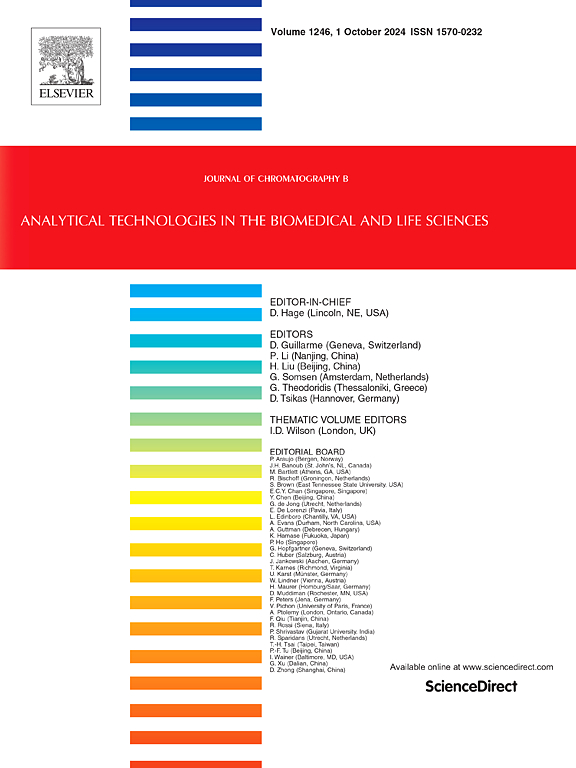Serum untargeted metabolomics combined with mouse models reveals potential mechanisms of ChengShu QingChu decoction for the treatment of vitiligo
IF 2.8
3区 医学
Q2 BIOCHEMICAL RESEARCH METHODS
引用次数: 0
Abstract
To illustrate the potential immunological mechanisms of ChengShu QingChu Decoction (CSQC) in vitiligo treatment. An untargeted metabolomic approach was used to detect serum metabolites in 30 patients with progressive vitiligo. Annotation of the differential metabolites were performed using MetaboAnalyst 5.0 and the KEGG database. In addition, 58 Hub genes associated with metabolic pathways were obtained from the GSEA and KEGG databases, and functional enrichment for Hub genes. Finally, it was validated by a mouse model. 102 down-regulated and 86 up-regulated metabolites were detected in serum. The main metabolic pathways enriched for differential metabolites were sphingolipid metabolism and glycerophospholipid metabolism, and the signaling pathways included PI3K-Akt and JAK-STAT signaling pathways, and immune cells included CD56 bright natural killer cell and Central memry CD8 T cell. In the mouse model, a significant decrease in the number of CD8+T cells as well as a decrease in the mRNA expression of JAK1, JAK2, and STAT1 was observed in addition to a trend toward increased melanocytes after drug treatment. This study utilizes metabolomics and bioinformatics analyses, combined with in vivo experimental validation, to elucidate the potential mechanism of CSQC in the treatment of vitiligo.
求助全文
约1分钟内获得全文
求助全文
来源期刊

Journal of Chromatography B
医学-分析化学
CiteScore
5.60
自引率
3.30%
发文量
306
审稿时长
44 days
期刊介绍:
The Journal of Chromatography B publishes papers on developments in separation science relevant to biology and biomedical research including both fundamental advances and applications. Analytical techniques which may be considered include the various facets of chromatography, electrophoresis and related methods, affinity and immunoaffinity-based methodologies, hyphenated and other multi-dimensional techniques, and microanalytical approaches. The journal also considers articles reporting developments in sample preparation, detection techniques including mass spectrometry, and data handling and analysis.
Developments related to preparative separations for the isolation and purification of components of biological systems may be published, including chromatographic and electrophoretic methods, affinity separations, field flow fractionation and other preparative approaches.
Applications to the analysis of biological systems and samples will be considered when the analytical science contains a significant element of novelty, e.g. a new approach to the separation of a compound, novel combination of analytical techniques, or significantly improved analytical performance.
 求助内容:
求助内容: 应助结果提醒方式:
应助结果提醒方式:


